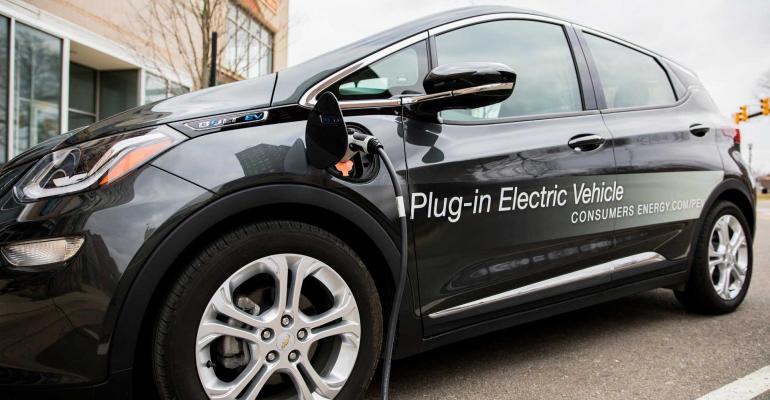The growing acceptance of battery-electric vehicles offers electric utilities the biggest opportunity to grow their revenues since air conditioning became common throughout the U.S., according to an executive from Consumers Energy of Jackson, MI.
Lauren Youngdahl Snyder, vice president-customer experience, says during a webinar organized by the Automotive Press Assn. that Consumers expects the popularity of BEVs to grow steadily over the next decade.
Currently, there are about 32,000 BEVs in Consumers’ electric service area, which extends over the western and northern part of Michigan’s Lower Peninsula. “We expect that number to reach more than 1 million vehicles over the next decade,” she says.
“We’re very excited about the potential of electric vehicles,” says Youngdahl Snyder (pictured, below left). BEVs represent a huge opportunity for electric utilities to increase their revenue, she notes, which also could lead to lower rates for other customers.
Electric utilities across the U.S. are heavily regulated, except in Texas, and generally regulators require a portion of increased profits from higher revenue and/or greater efficiency be returned to consumers, she says.
Consumers is eager to help expedite the shift to BEVs by making it easier for consumers to charge at home or for businesses to set up charging networks where they park and have their vehicles serviced.
 By the third quarter of 2022, Youngdahl Snyder says, Consumers expects to have in place a system where a resident or business can make one call to a service center and the utility will do the rest, from specifying and installing the appropriate charger or chargers, expanding the electric service to the location and arranging the billing.
By the third quarter of 2022, Youngdahl Snyder says, Consumers expects to have in place a system where a resident or business can make one call to a service center and the utility will do the rest, from specifying and installing the appropriate charger or chargers, expanding the electric service to the location and arranging the billing.
The goal is to make it as simple as possible for customers to make the transition to BEVs, she says. “We want it to be one-stop shopping.”
Youngdahl Snyder says Consumers expects about 90% of EV owners will charge their vehicles at home and in the evening when rates are low. “It’s way cheaper to plug into your charger than it is to go to the gas station,” she adds, noting Tesla says it’s possible to recharge a vehicle in seven minutes, which is less time than it takes to fill up a vehicle at a gas pump.
At the same time, batteries continue to improve so BEVs can travel longer distances on a single charge, helping eliminate range anxiety – one of the key barriers to EV adoption, Youngdahl Snyder says.
Consumers is moving to expand the public charging network across the state of Michigan. For example, the utility supported a study by Michigan State University that recommended building a network of charging stations along I-75 from Detroit northward to the Mackinac Bridge and along well-traveled corridors in Western Michigan.
The utility is working with its partners to develop a system of public chargers that will allow a BEV owner to travel all the way from Michigan to Colorado.
Consumers also is targeting charging at different workplaces and developing charging centers for fleets of school buses and other kinds of widely used vehicles, Youngdahl Snyder says.
The executive says the supply of energy Consumers plans to deliver to customers will be cleaner. Consumers has an ambitious plan to replace all of its coal-fired plants with power generated by renewable sources or natural gas by 2025.
While shifting away from coal, Consumers will maintain 8,000 megawatts of power – some of it kept in reserve – which will be more than sufficient to generate the electricity needed to support both BEVs and air conditioning on the hottest summer days.





